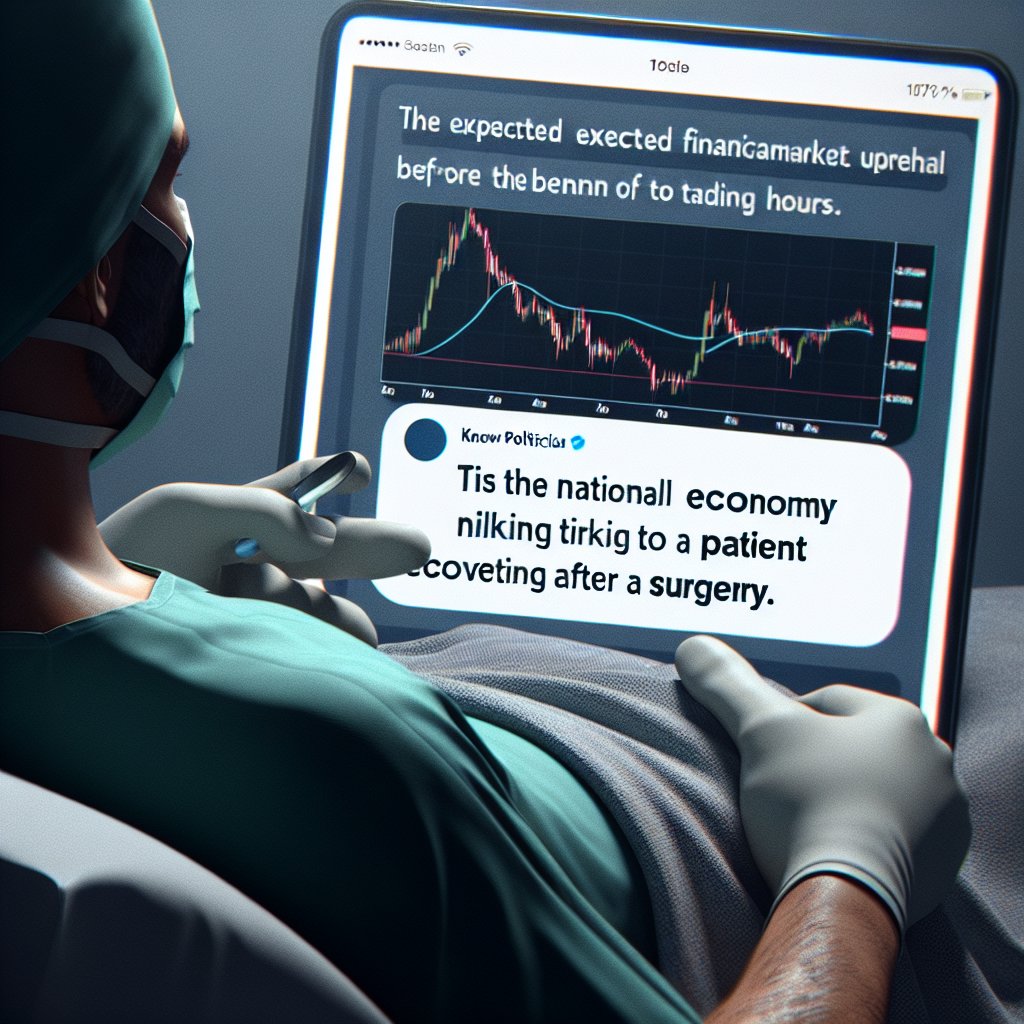President Trump tried to soothe the expected stock market volatility on Thursday before the opening of the U.S. stock market. In a post on the social media platform “Truth Social,” Trump used a medical metaphor to describe the U.S. economy as a patient who has undergone surgery and is now recovering.
The White House’s announcement of higher than expected equal tariff rates on Wednesday led to a sharp drop in U.S. stock index futures and the U.S. dollar. Asian and European stock markets also plummeted, with a similar reaction anticipated for the U.S. stock market on Thursday.
“It’s a wrap! The patient survived the surgery and is now recovering,” the President wrote, “The prognosis shows the patient will become stronger, more resilient, and better than ever before. Make America great again!”
Trump’s post aimed to reassure the markets and the public, emphasizing that the tariff policy will ultimately bring positive effects, despite short-term pain.
By 10 a.m. on Thursday, the Dow Jones Industrial Average dropped 1,500 points, a 3.6% decrease. The broader S&P 500 index fell by 3.95%, hitting its lowest level since September last year, and potentially facing its worst day since the 2022 inflation crisis. The tech-heavy Nasdaq index dropped by 4.9%.
Shortly after 4 p.m. on Wednesday, President Trump strode onto the stage at the White House Rose Garden amidst the cheers and applause of the audience.
Initially, the market reaction was relatively mild – stock index futures rose slightly, and the U.S. dollar strengthened against competitors like the euro, as Trump had only announced a universal 10% tariff on all goods entering the U.S., in line with some pre-event media reports.
However, when Commerce Secretary Howard Lutnick handed Trump a giant poster listing higher tariff rates on specific U.S. trading partners, investor sentiment suddenly shifted, leading to a significant drop in futures and the dollar.
According to the White House statement, the U.S. will impose a 34% equal tariff on Chinese goods, a 20% tariff on goods from the EU, and a 46% tariff on goods from Vietnam.
“When Trump said ‘equal tariffs,’ futures rose about 30 or 40 points,” said Steve Sosnick, Chief Market Strategist at Interactive Brokers in an interview with MarketWatch. “Equality didn’t sound so bad. Then, when everyone actually saw these (tariff rate) numbers – many countries’ tariff rates are much higher than the low 10% – it was too shocking, and the stock market fell.”
At 5 p.m. Eastern time, after a one-hour halt in U.S. stock trading, stock index futures began to plummet.
Wedbush Securities described the latest tariff statement from the White House as “worse than the worst-case scenario.”
“While there are still many details to be resolved, investors will be watching for specifics over the next 24 hours, but equal tariffs of 34% on China, 32% on Taiwan, and 20% on the EU are staggering,” wrote analyst Dan Ives at the company.
However, some point out that there are still many uncertainties in U.S. tariff policy. Adam Hetts, Portfolio Manager and Head of Global Multi-Asset at Janus Henderson Investors, noted that it remains unclear how long these high tariffs will last.
“The tariffs imposed by the U.S. on other countries are stunning, indicating more of a ‘negotiation strategy.’ However, in the foreseeable future, the market will remain tense,” Hetts wrote, “Fortunately, this means there is still significant room for reduction in tariffs from now on, even though the baseline is 10%.”

